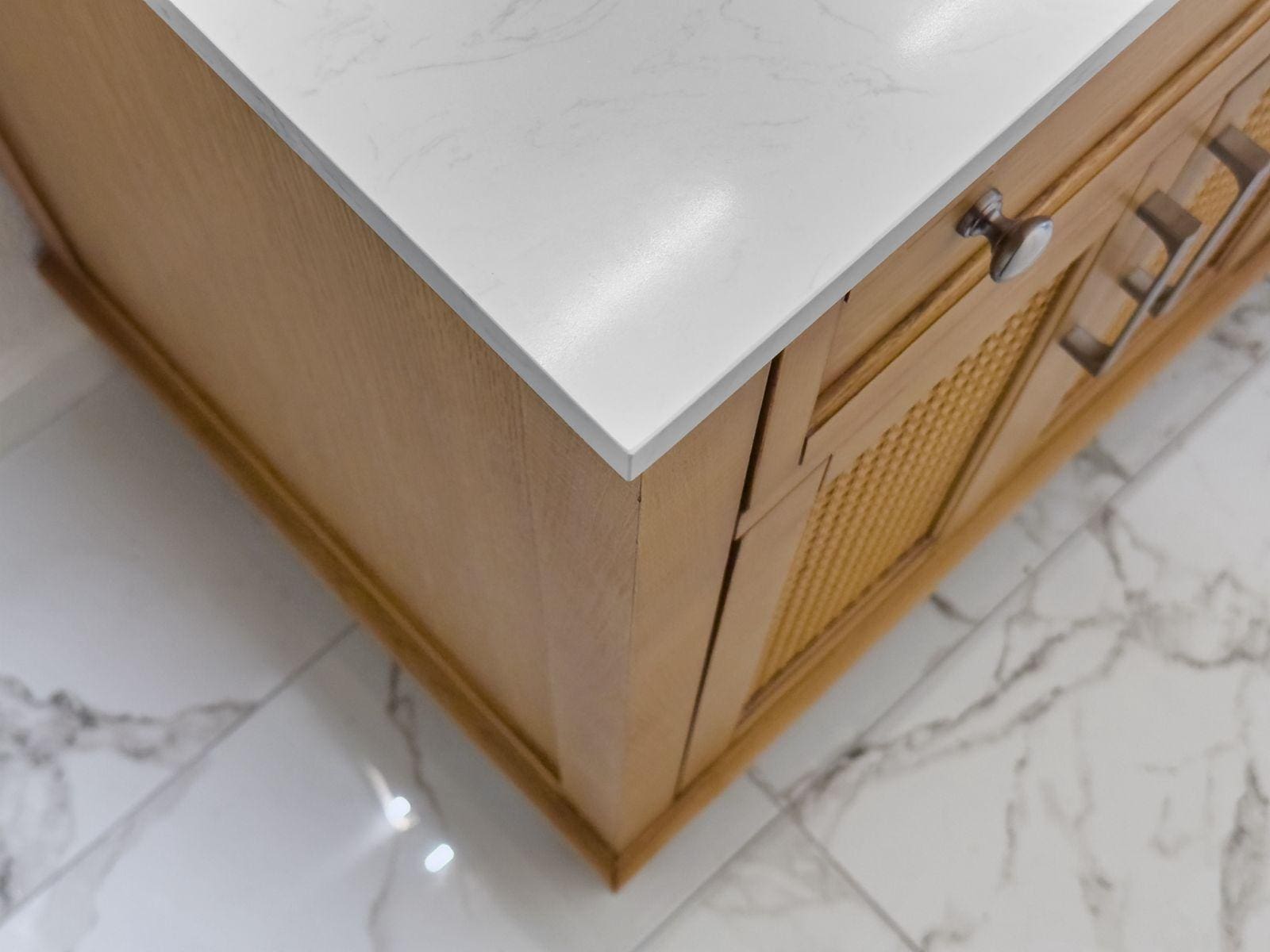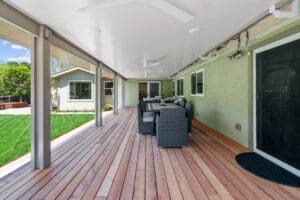Alright, let’s have a real talk about that often-overlooked, catch-all space in our homes: the garage. For many of us, it’s the final frontier of clutter—a no-man’s-land of holiday decorations, half-empty paint cans, and that exercise bike we swear we’ll use again someday. But what if we told you that space has the potential to become the most versatile and valuable room in your house? No, really.
We’ve seen it time and again here in the Bay Area, where square footage is like gold dust. Converting your garage into a functional living space isn’t just a pipe dream; it’s one of the smartest ways to gain room without the massive upheaval and cost of a full home addition contractor project. Think about it: the structure is already there. We’re just giving it a serious glow-up. So, grab a coffee, and let’s brainstorm what your garage could become.
Why Even Bother With a Garage Conversion?
First things first, let’s address the elephant in the room. Where will all our stuff go? It’s a valid concern. But honestly, how much of that stuff do we actually need? A good, ruthless purge is often the first and most therapeutic step in any home remodeling journey. Once we clear the decks, the possibilities really open up.
We find that homeowners are converting their garages for a ton of clever reasons:
- The Ultimate Home Office: Need a dedicated space away from the household chaos? A garage conversion offers privacy and separation.
- A Guest Suite In-Law Unit: Perfect for hosting family or generating rental income. Imagine your guests having their own private entrance!
- A Killer Entertainment Den: Create the game room, home theater, or casual hangout spot you’ve always wanted.
- A Creative Studio: Whether you’re an artist, a musician, or a yogi, this can be your sanctuary.
- A Much-Needed Bedroom: Growing family? This is a fantastic way to add a bedroom without a whole house remodeling project.
The return on investment can be significant, both for your wallet and your quality of life. It’s a project that just makes sense, especially for us here in Contra Costa County.
The Nitty-Gritty: What Does This Process Actually Look Like?
Okay, so you’re intrigued. But what are we actually signing up for? A garage conversion is a serious expert home improvement project, but it’s far less invasive than, say, a basement remodel. Since the shell already exists, we’re focusing on the interior transformation. Here’s a high-level look at the journey.
Step 1: The Big Ideas (And The Legal Stuff)
Before we pick out paint colors, we have to talk about permits. We know, we know—it’s the least fun part. But skipping this step is a recipe for disaster down the line, especially when it comes time to sell your home. In cities like Walnut Creek, Danville, and Oakland, building codes are no joke.
A good remodeling company will handle this for you. They’ll navigate the permit process with your local jurisdiction to ensure everything is above board. This includes making sure your plans meet requirements for ceiling height, egress windows, and insulation. It’s not the glamorous part of the job, but it’s the foundation for a successful project.
Step 2: Making It Feel Like Home, Not a Garage
This is where the magic happens. The goal is to make the space indistinguishable from the rest of your home. That means addressing a few key areas:
- Insulation and Climate Control: Your current garage door is about as insulated as a screen door. We need to properly insulate the walls and the former garage door opening and install an efficient heating and cooling solution. Trust us, you don’t want to try working in a converted garage that’s 50 degrees in the winter.
- Flooring: We’re starting from concrete slab, which is cold and hard. We’ll need to level it and install a proper subfloor before adding your choice of flooring—luxury vinyl plank, engineered hardwood, or even tile.
- Walls and Ceiling: Goodbye, exposed two-by-fours and fiberglass batts! We’ll frame out proper walls, run new electrical and plumbing (if needed), and finish with drywall for a clean, polished look.
- Lighting and Electricity: This is your chance to get it right. We can install ample overhead lighting, add plenty of outlets for all your devices, and even set up dedicated circuits for a mini-fridge or entertainment system.
Ever wondered why some conversions still feel a bit…off? It’s usually because one of these fundamental systems was overlooked. We make sure they’re the priority.
Budgeting for Your New Space: Let’s Talk Numbers
We get it—this is the part everyone wants to skip to. How much is this going to cost? While every project is unique, we can give you a realistic ballpark. The price of a garage conversion is typically lower than a home addition because you’re working with an existing structure, but it’s a significant investment in your property.
Here’s a basic breakdown of where your money goes:
| Cost Factor | Low-End Estimate | High-End Estimate | What’s Included |
|---|---|---|---|
| Basic Conversion | $25,000 | $45,000 | Insulation, drywall, basic flooring, electrical, lighting, paint, and a standard entry door. Think a simple office or den. |
| Mid-Range Conversion | $45,000 | $75,000 | Includes everything in Basic, plus higher-end finishes, a mini-split HVAC unit, more complex electrical, and some built-ins. |
| High-End / ADU Conversion | $75,000+ | $120,000+ | Full bathroom or a kitchen remodelingette, high-end materials, full compliance for a legal rental unit (ADU), and luxury home renovations finishes. |
FYI, these are rough estimates for our area. The final cost depends on the size of your garage, the quality of materials, and the complexity of the work (adding a bathroom is a game-changer, both in function and price).
Why You Need a Pro (And How to Pick the Right One)
Look, we’ve all binge-watched enough home renovation shows to feel dangerously confident with a hammer. But a garage conversion is not a DIY project. You need a general contractor who can coordinate the dozen different trades required—from framers and electricians to plumbers and finishers.
Trying to manage it yourself is a part-time job that most of us don’t have time for. And let’s be honest, the potential for costly mistakes is high. When you work with a team like ours at EA Home Builders, you’re not just hiring muscle; you’re hiring a project manager, a design consultant, and a permit expediter all in one.
So, how do you find the nearest reputable home renovation contractor?
- Do Your Homework: Search for “home remodeling near me” or “basement contractors” (many of us handle both!) and read the reviews. Pay attention to how companies respond to feedback.
- Look at Their Portfolio: Any remodeling company worth its salt will have a gallery of past projects. Do their finished conversions look like a real part of the house?
- Get Multiple Quotes: Don’t just go with the closest or cheapest option. Get at least three detailed quotes so you can compare apples to apples.
We’re obviously biased, but we believe the team at EA Home Builders stands out. We’ve been serving Walnut Creek, Danville, and the wider Bay Area for years, and our focus on clear communication and quality craftsmanship is what our 5-star reviews are all about. Whether you’re considering a garage conversion, a bathroom renovation, or custom remodels, we treat your home like it’s our own.
Answering Your Burning Questions
We hear a lot of the same great questions from homeowners. Here are a few of the most common ones.
1. Will a garage conversion add value to my home?
In almost all cases, yes! You are adding legally permitted, heated square footage to your home’s living area, which appraisers recognize. While the return isn’t always 100%, the added functionality and space are a huge selling point. It’s often a smarter financial move than a whole house remodeling project if you’re just looking to gain one or two rooms.
2. How long does a typical conversion take?
From the first day of demolition to the final walk-through, a standard conversion without a bathroom takes about 4-8 weeks. Adding a bathroom or a kitchenette can extend that timeline to 10-12 weeks, as we’re dealing with more complex plumbing and inspections.
3. Do I need to worry about parking or HOA rules?
Absolutely. This is a critical step. If you have a homeowner’s association, you must check their CC&Rs regarding parking and exterior modifications. Even without an HOA, many cities require you to maintain a certain number of off-street parking spaces. This is something we can help you figure out during the initial consultation phase. IMO, it’s better to know this upfront than to get a nasty surprise later.
Your New Favorite Room Awaits
Transforming your garage from a storage dungeon into a beautiful, functional living space is one of the most rewarding projects we do. It’s about unlocking potential you didn’t even know you had. It’s smarter than moving and more focused than a massive whole house remodel.
So, what do you say? Ready to finally do something about that black hole of a garage? If you’re in Contra Costa County and want to chat with a general contractor who gets it, give EA Home Builders a call. Let’s sit down, look at your space, and turn that “what if” into “what’s next.” Your future home office, guest suite, or game room is waiting.






